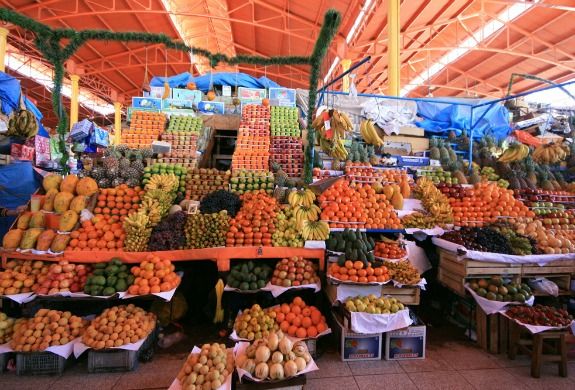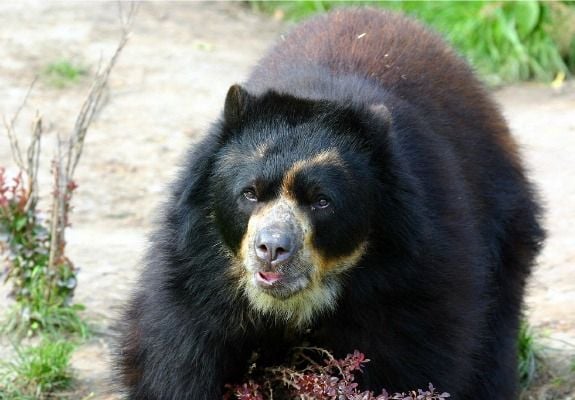A Short Bike Ride in the Peruvian Andes
The author kicks off 2013 with a 1,100-mile cycling journey through the Andes from Lima, Peru, to Ecuador’s lofty capital of Quito
/https://tf-cmsv2-smithsonianmag-media.s3.amazonaws.com/filer/20130103101109PeruMountainsSMALL.jpg)
For those who grow dreamy-eyed at thoughts of high mountains, vacant wilderness, quinoa on the camp stove and the ever-present chance of seeing a puma, Peru is gold country. The nation encompasses a substantial portion of the low-lying Amazon rainforest as well as a balmy coastline 1,400 miles long—the destinations of jungle explorers, bird watchers, river adventurers and surfers. But it’s the Andes that constitute the nation’s heart. This longest of the world’s mountain ranges runs thousands of miles north to south and largely defines the landscape and the spirit of Peru. In these high Peruvian elevations are sites like Machu Picchu and Cusco, almost endless wilderness, wild cats, guanacos (the wild relatives of alpacas and llamas) and a species of unusual bear and dozens of peaks higher than 18,000 feet. But—good news for travelers—these mountains are not inaccessible. Navigable roads crisscross the spine of the Andes, providing access to some of the planet’s most tremendous and inspiring scenery.
One of the very highest paved passes in the world is just 80 miles from Lima—Ticlio, or Anticona. Now, as I make final arrangements for a trip to Peru with my bicycle, the temptation to ride directly to Anticona is strong—but my brother Andrew, also on this trip, and I have thought better of the idea. The overall climb and the final altitude of almost 16,000 feet on day one just might kill us. Altitude sickness is a very real concern in places like Peru for people like us, who have spent our lives mostly at sea level. To treat this ailment we are packing pills. “Take 1 tablet orally 2 times a day starting 1 day before reaching high altitude, then continue for at least 3 days,” the bottle of Acetazolamide directs us. Yet the best cure may be preventative—becoming acclimated over time. For we would prefer not to subsist on a diverse diet of pills—we also have pills to treat our water, pills to fight stomach bugs, pills for typhoid, anti-inflammatory pills and malaria pills. By remaining high enough—5,000 feet up seems to be the magic number—we can avoid disease-bearing mosquitoes, but that brings us back to those altitude pills. We may just have to take our medicine.
Andrew returns to the States from Quito, Ecuador, three weeks from now, which gives us something of an objective—a 1,100-mile trip to this lofty city (altitude 9,350 feet), arriving by no later than January 19. En route, we’ll have many opportunities to climb two-mile-high passes—and we may try and grab a glance of Mount Huascarán. If we were climbers, this might be our target conquest. Huascarán is the highest mountain in Peru, the highest in the tropics and the fifth highest in all the Andes. It stands 22,205 feet (6,768 meters) above sea level and is preserved within a national park of the same name. The energy costs of cycling on loaded bikes across this sort of terrain may amount to about 4,000 calories per day (we will probably consume about 60 calories per mile of pedaling), which has us already thinking about food. Peru is tropical, and we anticipate a fantastic selection of fruits at outdoor markets. We hope to go especially heavy on cherimoyas, an Andean native that is too costly (often $6 per fruit or so) to buy more than a few times per year in the States. But food, especially fresh produce and the stuff of street vendors, must be treated with caution in Peru. It’s a tall order for travelers fighting a constant calorie deficit—but it is, in fact, our doctors’ orders. Anything with a thick peel should be safe, they have advised us, but raw vegetable salads will wait until we’re home again. We’re not to drink the water, either, and have been advised by experienced travelers to only drink purified water from sealed plastic bottles.

In Turkey about 15 months ago, I had the pleasure of a meeting a brown bear at midnight just outside my tent and then enjoyed a rousing slapstick time of ducking under the bullets of poachers who began firing at the animal. But bears are abundant in Eurasia, while in South American they are not. The spectacled bear lives in much of the northern Andes, but its population consists of just several thousand animals between Bolivia and Venezuela. The spectacled bear is the last living descendant of the enormous short-faced bear, which vanished from North America 12,500 years ago. The odds of seeing a wild bear in Peru are tiny, but the fact that it’s possible elevates this land into a realm of wildness that places like England, Holland, Kansas and Portugal lost long ago, sacrificed for agriculture and towns. Bears, like no other creatures, embody the spirit of wildness (never mind the trash-fat black bears of America’s suburbs and national parks). The world is a richer place just for having these big-muscled carnivores at large—even if we may never see them. Other Peruvian wildlife viewing possibilities include tapirs, anacondas, caimans, jaguars and an incredible wealth of river fishes—including the giant arapaima—in the Amazon basin. In the highlands live guanacos. Tiptoeing through the mountains are also pumas (same species as the cougar or mountain lion), and condors fly overhead. I once read somewhere that hikers in the Andes can be tipped off to the presence of a puma by the sudden appearance of one or more condors ascending into the sky—presumably chased off a half-eaten kill by the returning cat. I’ll be bird watching if it may help me see a cat.
We’ve kept our gear as basic as can be without unnecessarily sacrificing simple comforts. We are packing a bug-proof and waterproof two-person tent, powerful sunscreen, a camping stove, sleeping bags, books, basic bike repair gear and our decadent pill rations. We’re rolling on essentially flat-proof Armadillo tires—and I’ll be writing about our travels from cozy mountain campsites. I’m a Luddite in many ways, but 3G Internet access is a modern miracle I welcome, from the fringes of the civilized world.

/https://tf-cmsv2-smithsonianmag-media.s3.amazonaws.com/accounts/headshot/Off-Road-alastair-bland-240.jpg)
/https://tf-cmsv2-smithsonianmag-media.s3.amazonaws.com/accounts/headshot/Off-Road-alastair-bland-240.jpg)